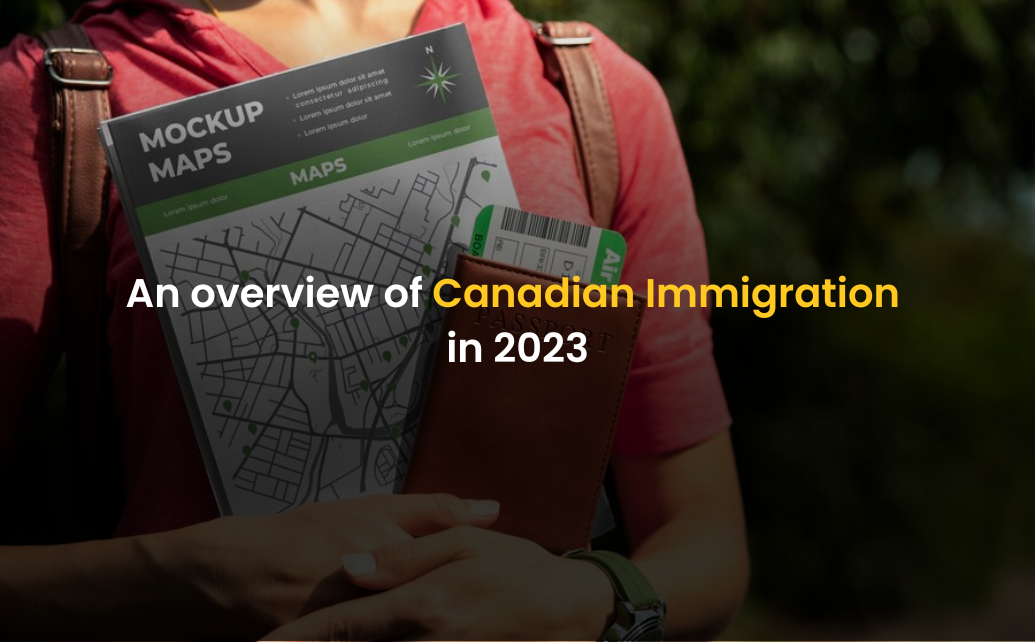According to the most recent census, immigrants now make up their highest-ever share of Canada’s total population (23%), breaking a record set 100 years ago.
As we approach 2023, the Canadian government appears to be unwavering in its commitment to immigration and welcoming newcomers to the country. Canada hopes that increased immigration will continue to aid the country’s social and economic development while also working to reunite families and assist vulnerable populations through Canada’s humanitarian aid capacity.Looking ahead to 2023, here is a general overview of what Canadian immigration may look like in the coming year.
Client Experience: I’m hoping that the IRCC application backlog continues to shrink.
The total application backlog at Immigration, Refugees, and Citizenship Canada (IRCC) has steadily decreased since September 2022. IRCC has reduced its backlog by 400,000, according to data provided to CIC News.
IRCC has also received an additional $85 million in funding to “reduce application inventories” and has increased “front-line operations staff” by 2,521 employees between March 2019 and November 2022. It is hoped that these factors will continue to have a positive impact on IRCC’s service standards and application backlog in 2023.
Planned Immigration Levels for 2023
Within the Immigration Levels Plan for 2023, Canada has set a record-high immigration target, indicating that IRCC believes it can manage the backlog while welcoming many newcomers.
The 2023 Immigration Levels Plan target (465,000) is broken down by immigration category as follows.
- 82,880 for Express Entry
- PNP (Provincial Nominee Programs): 105,500
- 28,500 parents and grandparents
- 78,000 spouses/partners and children
A Look Ahead at Four Key Canadian Immigration Pathways
Provincial Nominee Programs in 2023:
We learned near the end of this year that the PNP is set to overtake Express Entry as Canada’s top immigration pathway. PNPs are critical in assisting Canada in meeting specific labour market needs that are becoming more prevalent throughout the country. As a result, Canada is expected to accept slightly more PNP immigrants than Express Entry candidates in 2023.
Express Entry in 2023
IRCC is expected to introduce ‘targeted’ Express Entry draws in 2023, reinforcing Canada’s desire to address specific labour market needs and gaps. Instead of issuing Invitations to Apply (ITAs) based on a candidate’s CRS score, these draws will target candidates with specific occupational experience, language skills, and educational backgrounds.
Parents and Grandparents Program in 2023
Canada will continue to support family reunification in 2023. The popularity of Canada’s Parents and Grandparents Program demonstrates this (PGP). According to Canada’s latest Immigration Levels Plan, the PGP, along with other immigration pathways such as the Super Visa, will aim to welcome more than 28,000 newcomers next year.
Note: Official details on the exact selection process that IRCC will use for the PGP in 2023 have yet to be made available.
International Students in 2023
IRCC announced an amendment to its off-campus work hours policy for international students in Canada in October.
“International students who are in Canada and have off-campus work authorization on their study permit will be allowed to work more than 20 hours per week off-campus while class is in session” from November 15, 2022, to the end of 2023.
Designed to assist Canada in dealing with labour shortages, as Canada faces “historic labour shortages and an unemployment rate that is low by historical standards,” this change could allow over half a million international students to work more hours while attending classes between now and the end of next year.
How will these changes affect Canada in 2023?
Immigration benefits Canada’s population and labour force, and this trend is expected to continue in 2023.
For example, the expected increase in newcomers to Canada through both PNPs and targeted Express Entry draws should allow Canada to relieve some of the labour market pressures currently affecting the country. As more capable, skilled immigrants enter the country, particularly those working in high-demand occupations, Canada will benefit economically from the natural spending cycle that occurs when people work.
Furthermore, lifting the off-campus work hours rule temporarily means that more international students may come to Canada in the future, as this move is expected to make Canada an even more appealing international student destination. Suppose more international students stay in Canada after graduation. In that case, this change in the work hours policy will mean that more international students will eventually contribute to the improvement of Canada’s economy and labour market (much like the Express Entry and PNP immigrants described above).
As a result, immigration in 2023 should provide many reasons for all Canadians to be more optimistic about the country’s labour force and economic future.




Leave a Reply